How to cook with seaweed
This delicious subaquatic ingredient, often used to wrap sushi rolls, packs meals with umami flavours. Our guide explores different types of seaweed from nori and wakame to British varieties like dulse, plus seaweed’s health benefits and suggestions for sweet and savoury seaweed recipes.
What is seaweed?
An underwater plant, seaweed describes a number of different leafy algae, including some edible varieties. The flavour that unites them all is a rich, savoury ‘fifth’ flavour, umami. You might also see them marketed as ‘sea vegetables’.
It pairs brilliantly with fish as well as running a tasty undercurrent through vegetarian and vegan dishes, and brings character to soups and stocks that are essential to East Asian dishes.
Where does seaweed come from?
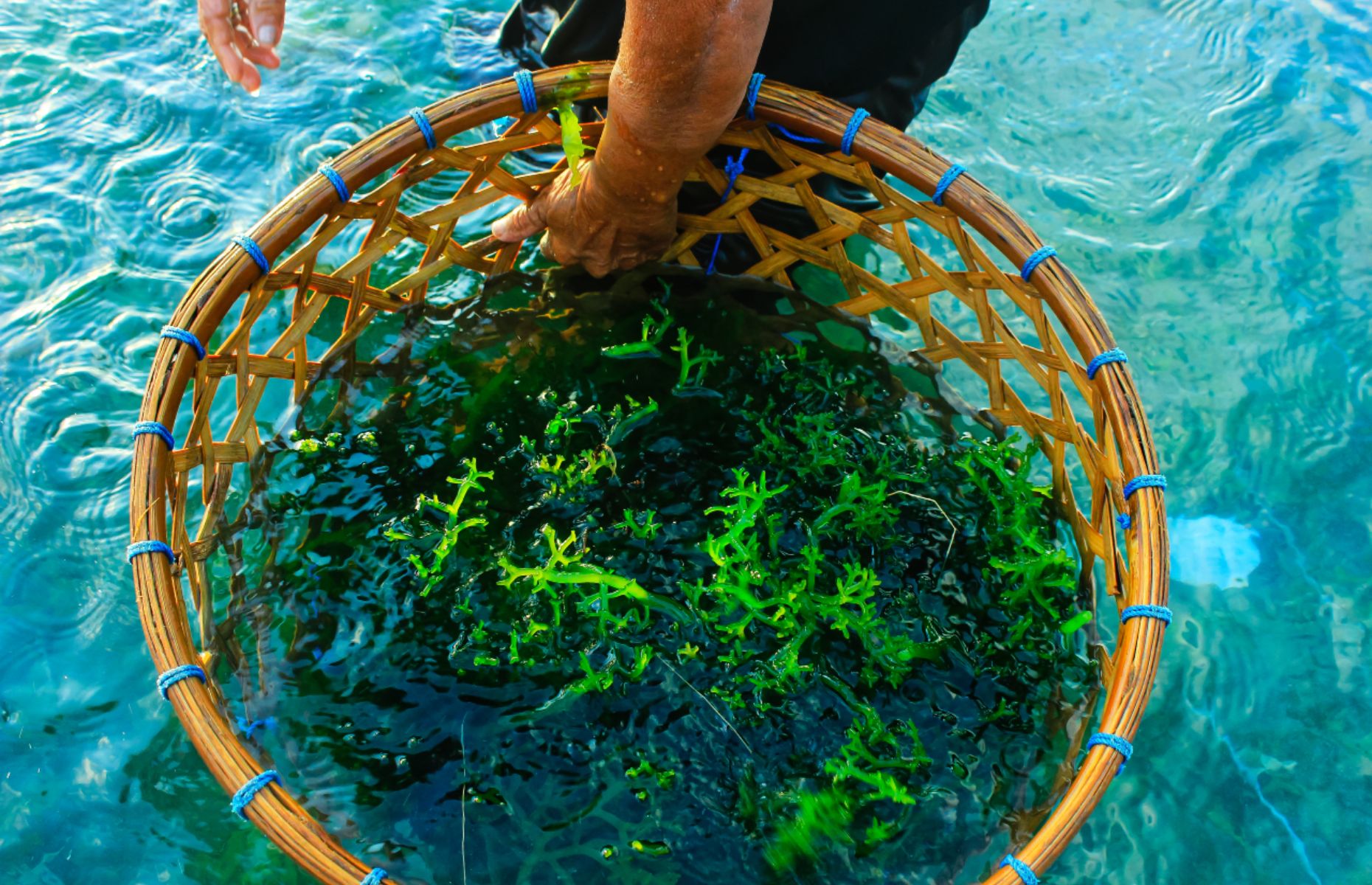 Dimasranggah/Shutterstock
Dimasranggah/Shutterstock
All around the world, seaweed is a traditional part of diets – including in the UK and Ireland. Seaweed is grown on long ropes then hauled above water, cut and cleaned before processing.
Most of the seaweed on our supermarket shelves comes from China and Korea, its biggest global producers (China makes around half the world’s seaweed). But we have seaweed farms in the UK too – in 2013, they harvested 2,000-3,000 dry tonnes of it.
READ MORE: A complete guide to oysters
Types of seaweed
Nori
The UK’s favourite edible seaweed has to be nori – a dark green, deliciously savoury seaweed. Nori tastes rich and salty, and it might also have smoky and sweet notes. It's commonly sold as sheets which can be served whole, cut or crumbled, but you can also find it sold as flakes or crisps.
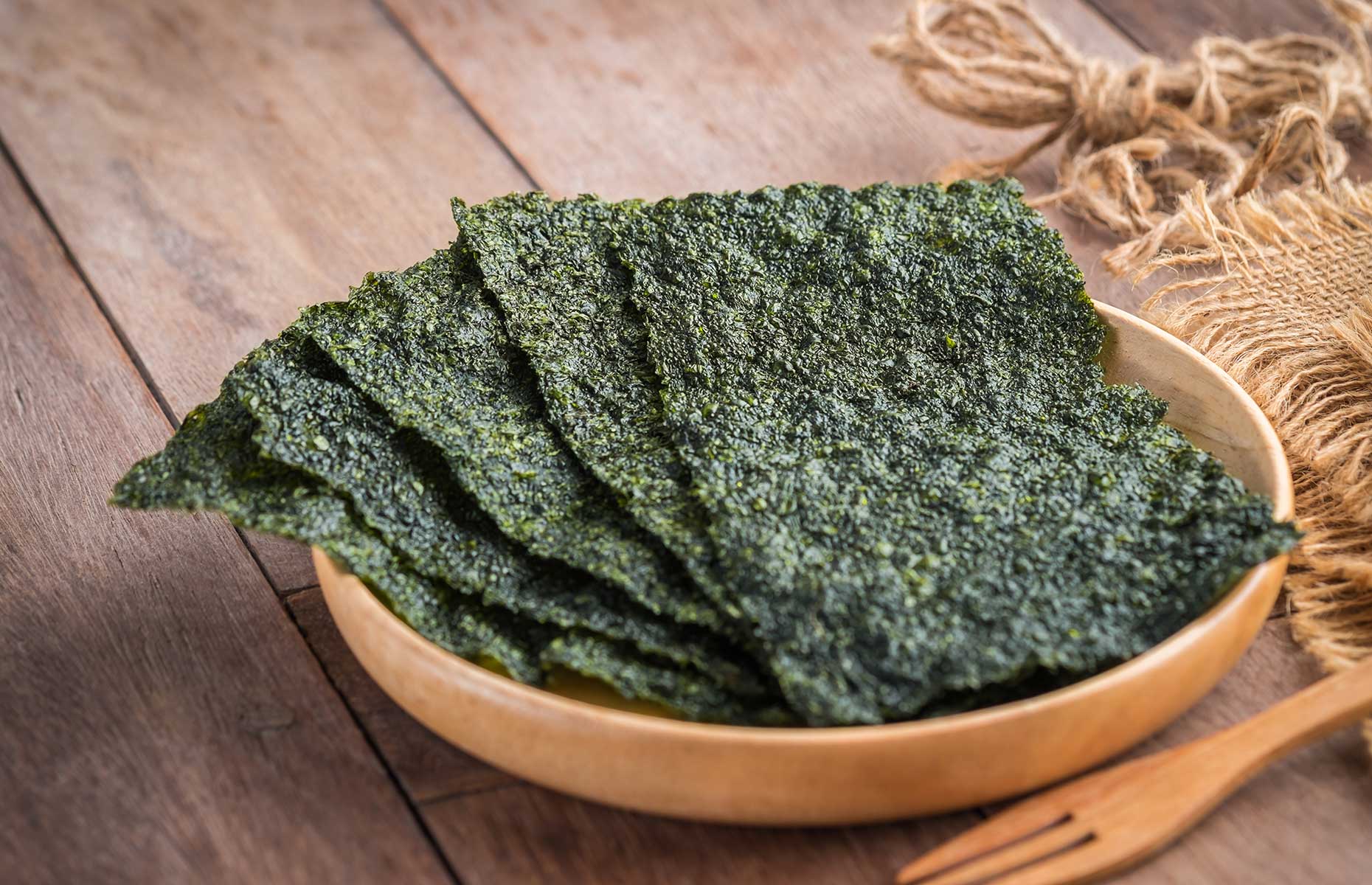 Amarita/Shutterstock
Amarita/Shutterstock
Na Wang works at Yutaka, a leading Japanese food business in the UK that supplies nori to all the major supermarkets, as well as online shops like Sous Chef. She estimates that during the COVID-19 pandemic, Yutaka sold double the quantity of nori year on year as more people gave sushi a try at home (and its sushi rice tutorial has now been watched nearly a quarter of a million times).
Wakame
Another East Asian import, wakame is a silky seaweed usually served whole in soups (especially miso soup) and salads. Like all seaweeds it has a briny, savoury flavour, and it’s a little bit sweet. You can buy it fresh, frozen and dried – the latter might be labelled ‘fueru’, meaning ‘expanding’.
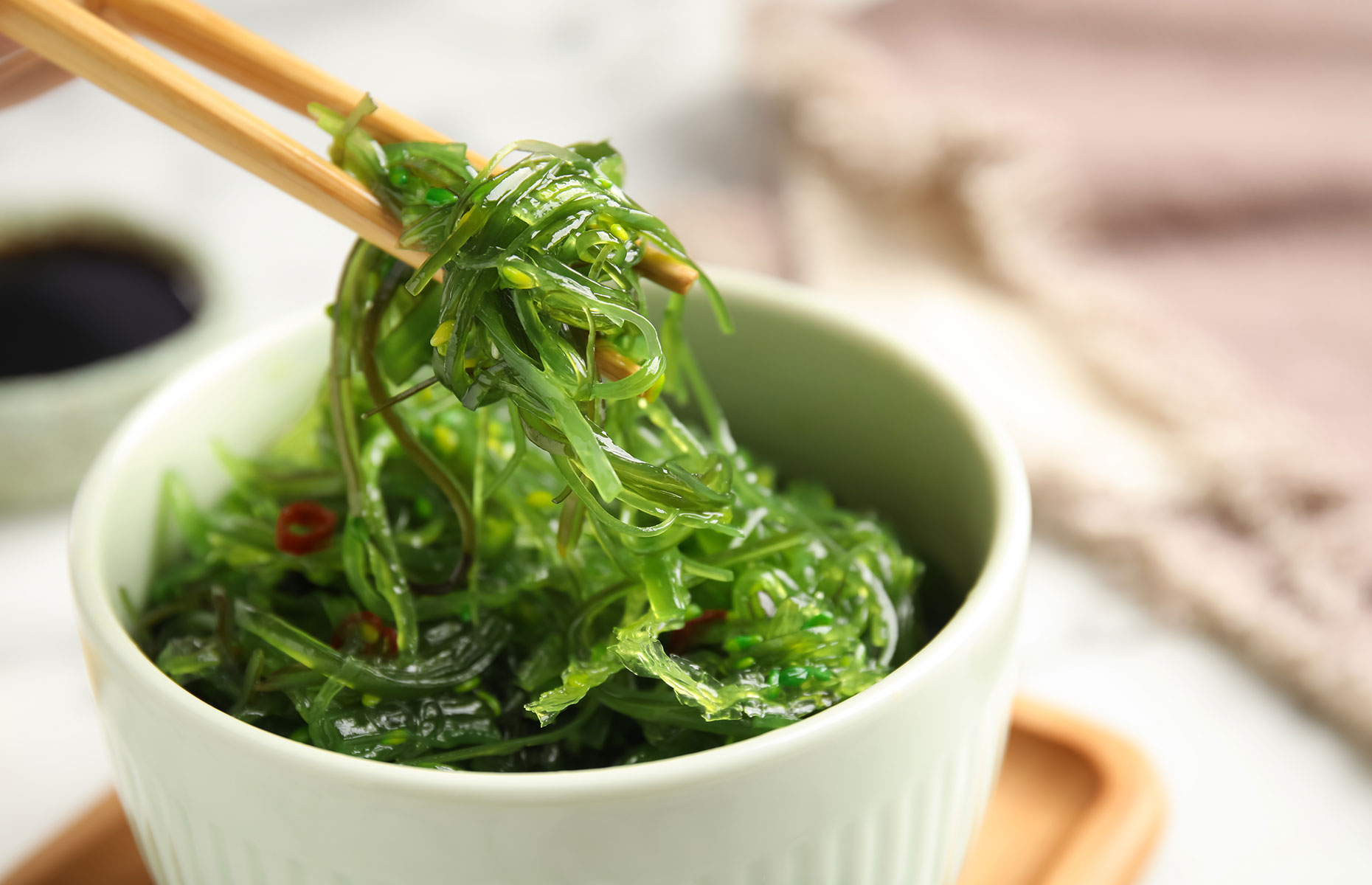 New Africa/Shutterstock
New Africa/Shutterstock
Kombu
You can’t make authentic Japanese dashi (a type of stock) without kombu, and you can’t make most Japanese dishes without good dashi. Kombu is a dark, thick, leathery type of kelp, and when boiled with bonito flakes or dried anchovies it creates a rich and flavourful base for miso soup, udon noodle dishes and more. It’s so delicious it’s even been used to flavour Irish whiskey casks.
Dulse
A rich and flavourful purple plant, dulse grows along British coastlines and, particularly when fried, can have almost a bacon-y taste – perhaps why it has been used to make a vegan take on a BLT. Dulse can be used to flavour Irish soda bread and you can find dulse butter to serve alongside seafood dishes. It even pops up in one Newfoundland gin.
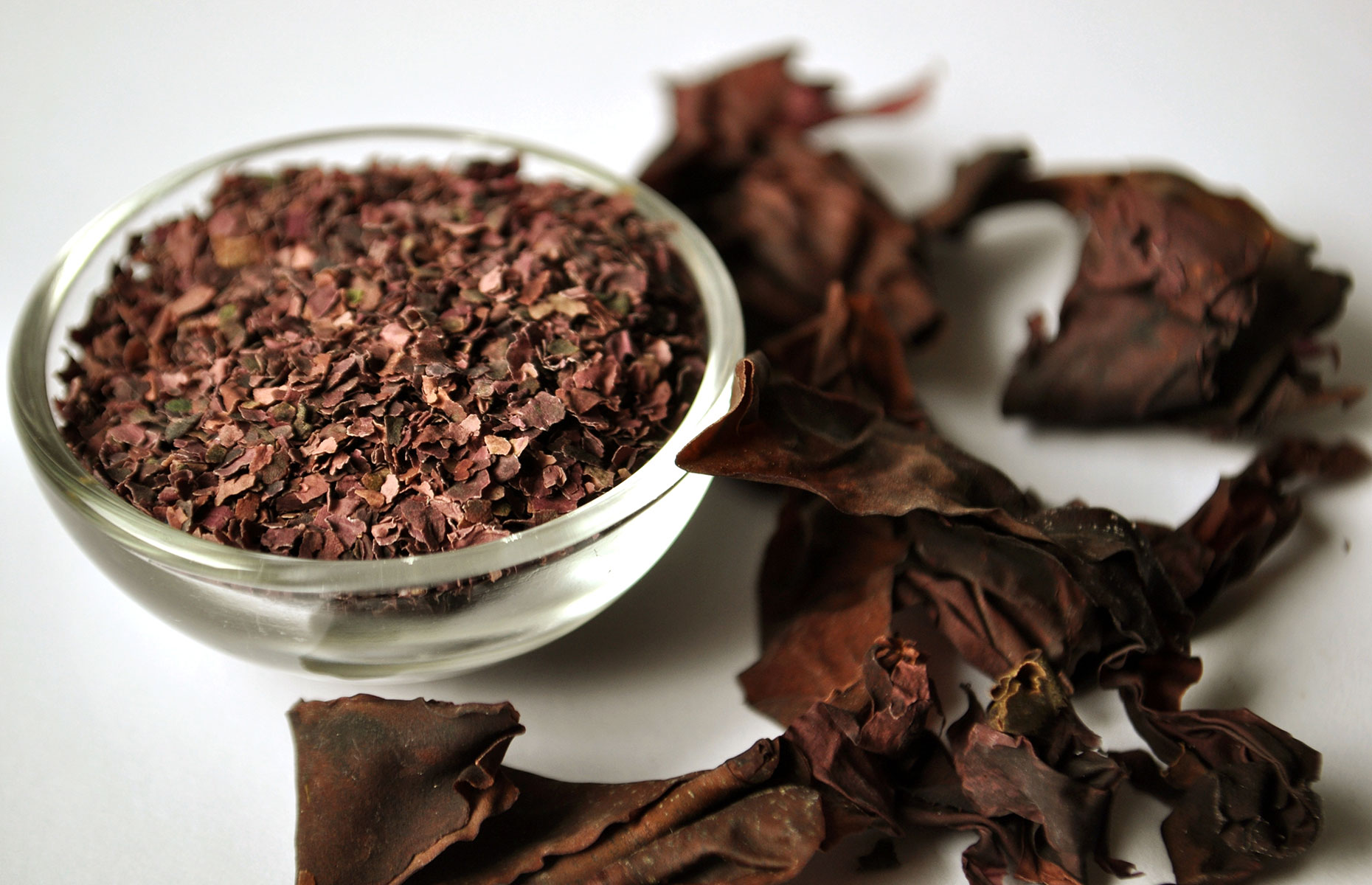 Akvals/Shutterstock
Akvals/Shutterstock
Seaweed health benefits
You’ll find iodine, vitamin B12 and iron packed into seaweed. Iodine is vital to thyroid function and seaweed is the most potent way to get it outside of meat, fish and dairy products. Like fish, seaweed is full of omega-3 fatty acids which are essential for brain development. It’s low in sugars and saturated fats and high in fibre, making it a healthy addition to a meal.
Seaweed contains plenty of antioxidants (particularly flavonoids and carotenoids), which protect cells from free radical damage. One carotenoid in particular, fucoxanthin, has been shown to improve blood sugar control in a randomised controlled trial.
READ MORE: How to cook with anchovies
Where to buy seaweed
Major UK supermarkets often sell sheets of nori for use at home – either for sushi, or to be cut or crumbled into dishes. For harder-to-find seaweeds like wakame, try Asian supermarkets in-store or online – Japan Centre has an amazing selection. You might also find seaweed from brands like Clearspring in health food shops.
For British seaweed, try Scottish brand Mara, The Cornish Seaweed Company or Atlantic Kitchen. Or, learn how to forage seaweed yourself at local events in places like Yorkshire, Fife, Cornwall, Dorset, Sussex and Kent.
Seaweed recipes
There are plenty of delicious ways to use each type of seaweed. Nori is a delicious topping for dishes like okonomiyaki, a pancake-esque Japanese street food classic. But if you’ve never tried making sushi before, it’s a really fun and easy way to try nori.
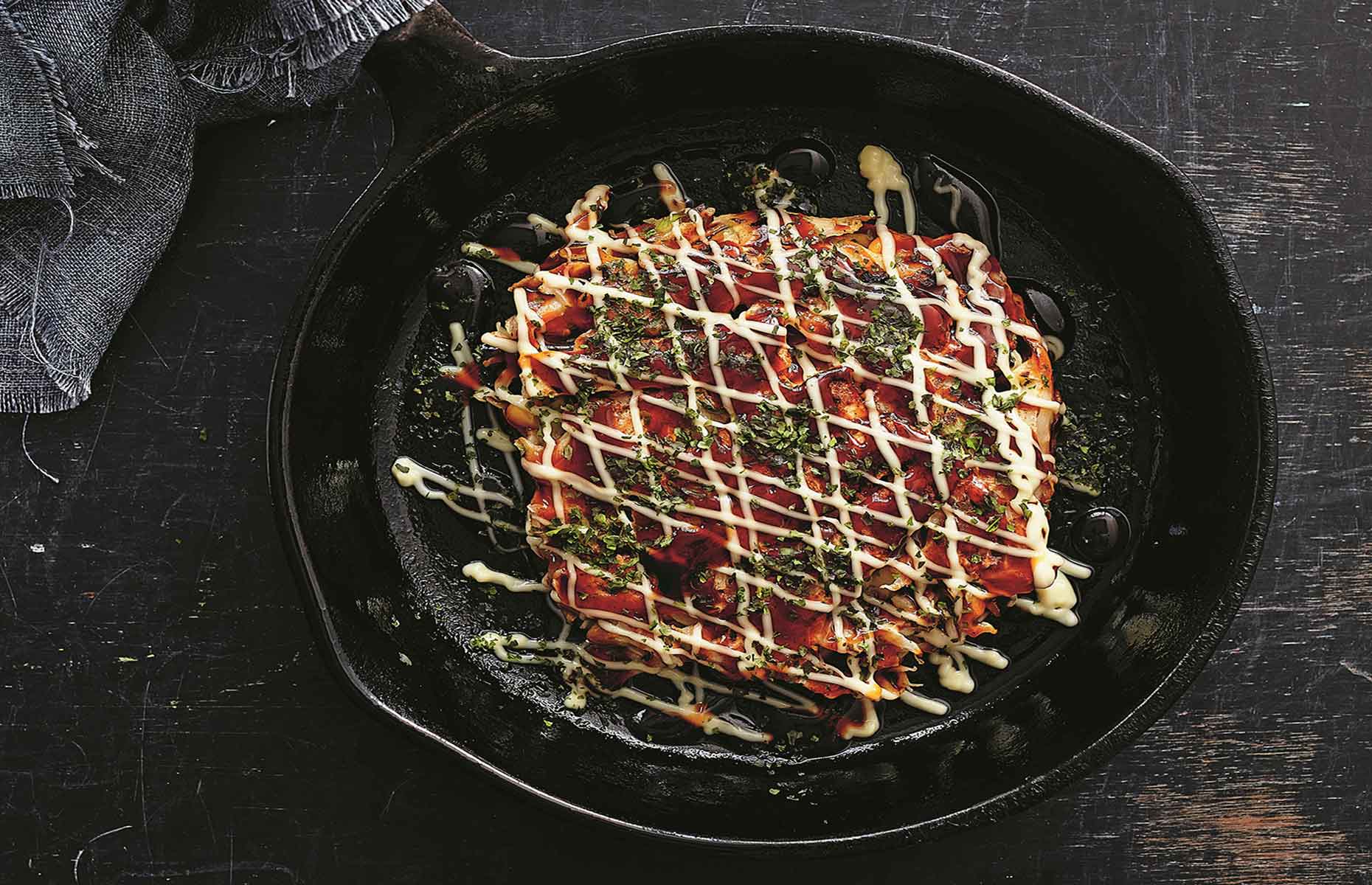 Yuki Sugiura/Pavilion Books
Yuki Sugiura/Pavilion Books
It’s easier than you’d expect to make sushi rolls (maki), Na Wang explains. “Firstly, use the correct type of rice,” she says. “Japanese rice is different from other types of rice – more sticky and shaped differently.” Sushi calls for short-grain rice, seasoned with vinegar. But there’s no need to buy specific ‘sushi vinegar’ – simply dress the rice with a mixture of rice vinegar, sugar and a little salt. “Secondly, our chef teaches us to mix the seasoning into the rice by cutting the rice diagonally, not stirring – avoid breaking the grains.”
READ MORE: Our best rice recipes
When it comes to rolling, practice makes perfect but Na has a couple of tips. “Wet your hands when shaping rice to avoid sticking,” she says. “And although it helps if you use a sushi mat to roll it, honestly you can just roll it in a piece of baking paper, or by hand – both are fine!” Of course, if you insist on being authentic, you can get everything – right down to the bamboo mat – in a kit.
Shuko Oda, co-founder of London udon bar Koya, adds that nori is a great store cupboard basic beyond sushi. “You can treat hand-torn nori sheets almost like sprinkles when finishing up a dish, and use them on salads and noodles, and in soups,” she says.
“This is a quick salad my mother used to make and I now often go for is: rub half a crushed clove of garlic in a salad bowl, mix one head of romaine lettuce, torn, with a tablespoon roasted sesame oil with your hands, then season with salt, pepper and a splash of rice vinegar. Add three or four sheets of hand-torn nori and give it a quick mix.”
“Or you can cook torn nori to make nori tsukudani, a black sweet-soy paste-like sauce, which is delicious on plain rice, and goes well with eggs too. I even like it mixed with spaghetti and herbs – or with prawns or calamari for something a bit different. To make it, simmer eight sheets of hand-torn nori in 50ml (1.6fl oz) water on low heat. Once the nori seems dissolved, add one tablespoon each of soy sauce, mirin and sugar and simmer for a further two minutes until glossy.”
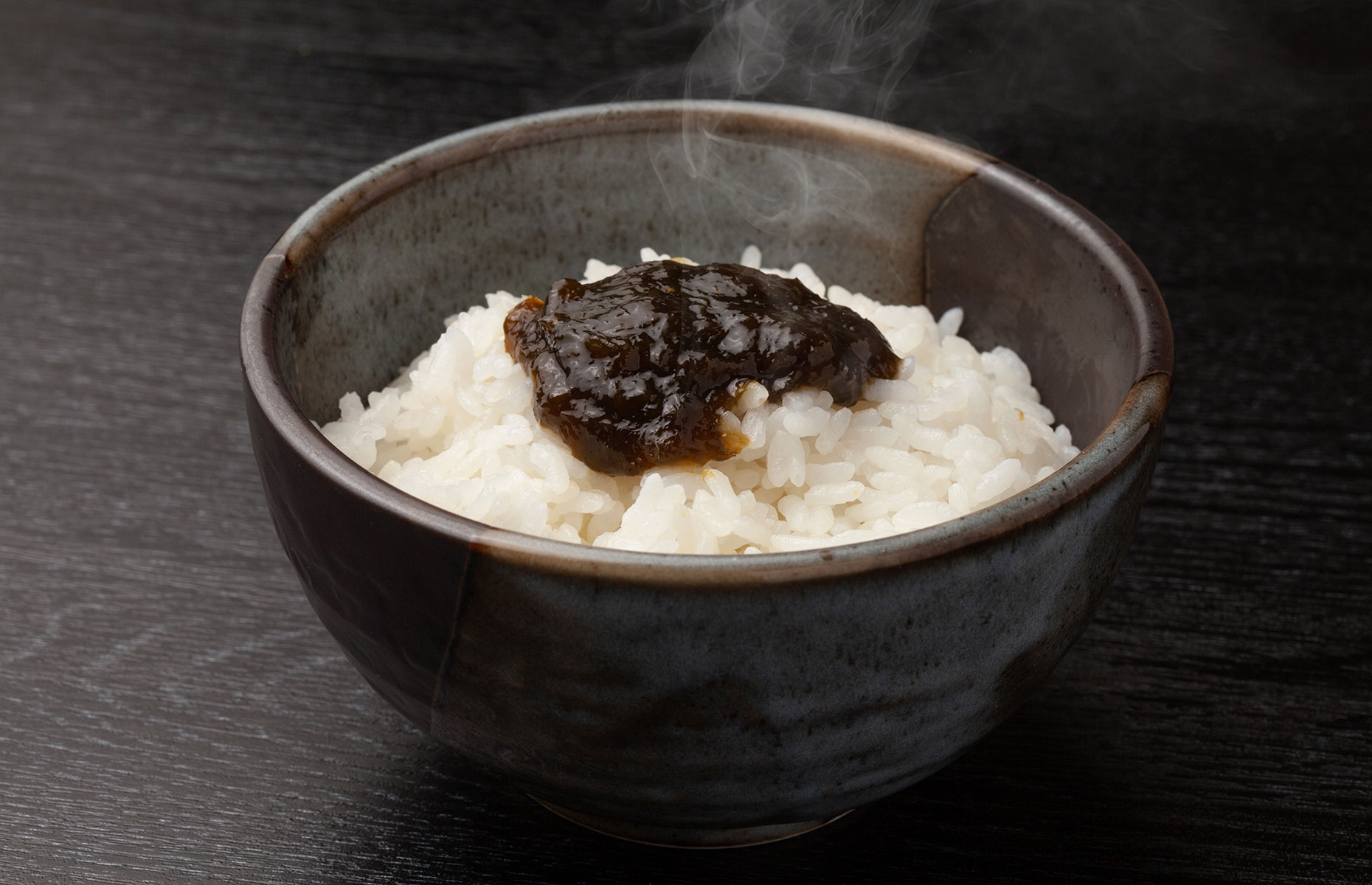 sasazawa/Shutterstock
sasazawa/Shutterstock
Shaulan Steenson, executive chef at Temaki sushi bar in Brixton, London, is also a kombu tsukudani fan. “Kombu is great because it’s very high in umami,” he says. “After you’ve used it to make dashi you can make it into tsukudani, which can be a topping for rice or a filling for onigiri."
READ MORE: How to cook with lemongrass
“Your delicious kombu dashi can then be used as the base for miso or noodle sauce, to simmer vegetables – daikon cooked in dashi is lovely – or as the stock for Japanese hotpot, maybe.” Kombu also makes a nice contribution to ramen and udon dishes.
 LisaBee Imagery/Shutterstock
LisaBee Imagery/Shutterstock
Kombu is also a star ingredient in this tasty Spanish shrimp tortillitas recipe. And it’s unexpected, but Paul Hollywood’s plum crumble recipe uses seaweed to draw out the umami savoury flavours of the pudding. Perhaps not a surprise it sometimes even sneaks into chocolate bars...
For something closer to home, you can easily make your own flavoured salts with crumbled nori or dulse. Traditional Welsh dish laverbread, which is a black seaweed sauce, shows a more rustic side of seaweed. Make laverbread yourself or buy ready-made, then mix it with oats and fry to serve alongside a traditional cooked breakfast.
Lead image: maramorosz/Shutterstock
Comments
Be the first to comment
Do you want to comment on this article? You need to be signed in for this feature
